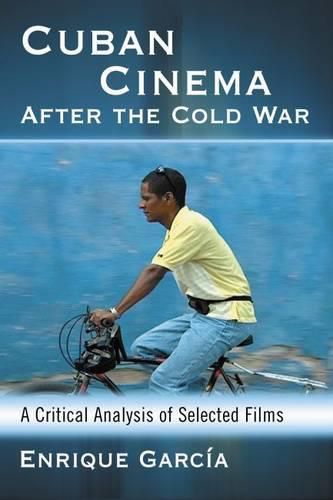Readings Newsletter
Become a Readings Member to make your shopping experience even easier.
Sign in or sign up for free!
You’re not far away from qualifying for FREE standard shipping within Australia
You’ve qualified for FREE standard shipping within Australia
The cart is loading…






The economic and cultural changes Cuba experienced following the collapse of the Soviet Union compelled Cuban filmmakers to rethink the revolutionary values and esthetics developed after the 1959 revolution. Long-forgotten genres re-emerged, established auteurs incorporated new aesthetic devices into their films and an influx of foreign capital led to the repackaging of revolutionary ideology into more visually attractive narratives.
Films such as Alice in Wondertown (1991), Strawberry and Chocolate (1993) and Juan of the Dead (2011) stirred controversy, criticized revolutionary discourse and helped establish new industrial models that allowed post-Castro national cinema to find global audiences on an unprecedented scale. This exploration of transformations in the Cuban film industry offers a detailed analysis of key post-Cold War Cuban films. Recurrent esthetic and sociopolitical tropes are examined to discover how Cuban cinema reflects the turbulent changes the island has experienced.
$9.00 standard shipping within Australia
FREE standard shipping within Australia for orders over $100.00
Express & International shipping calculated at checkout
The economic and cultural changes Cuba experienced following the collapse of the Soviet Union compelled Cuban filmmakers to rethink the revolutionary values and esthetics developed after the 1959 revolution. Long-forgotten genres re-emerged, established auteurs incorporated new aesthetic devices into their films and an influx of foreign capital led to the repackaging of revolutionary ideology into more visually attractive narratives.
Films such as Alice in Wondertown (1991), Strawberry and Chocolate (1993) and Juan of the Dead (2011) stirred controversy, criticized revolutionary discourse and helped establish new industrial models that allowed post-Castro national cinema to find global audiences on an unprecedented scale. This exploration of transformations in the Cuban film industry offers a detailed analysis of key post-Cold War Cuban films. Recurrent esthetic and sociopolitical tropes are examined to discover how Cuban cinema reflects the turbulent changes the island has experienced.